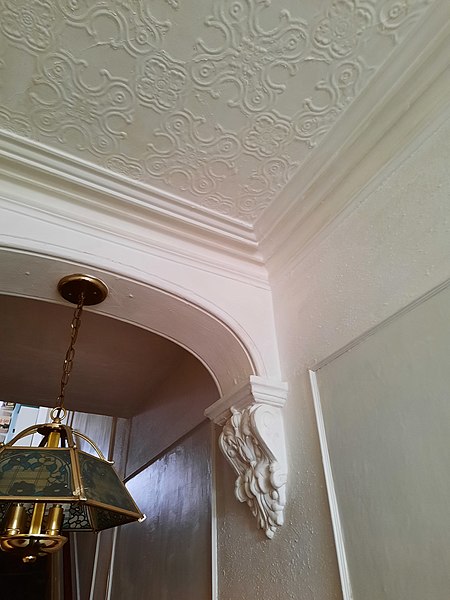An archivolt is an ornamental moulding or band following the curve on the underside of an arch. It is composed of bands of ornamental mouldings surrounding an arched opening, corresponding to the architrave in the case of a rectangular opening. The word is sometimes used to refer to the under-side or inner curve of the arch itself. Most commonly archivolts are found as a feature of the arches of church portals. The mouldings and sculptures on these archivolts are used to convey a theological story or depict religious figures and ideologies of the church in order to represent the gateway between the holy space of the church and the external world. The presence of archivolts on churches is seen throughout history, although their design, both architecturally and artistically, is heavily influenced by the period they were built in and the churches they were designed for.
Archivolts on the South Portal of the Cathedral of Our Lady of Chartres, Chartres, France.
Romanesque portal with rounded archivolts on Saint-Sulpice church in Paris
Gothic Portal with pointed archivolts on St Theobald's Church in Thann
Central Portal on the West Facade of the Saint Denis Cathedral
Moulding, or molding, also coving, is a strip of material with various profiles used to cover transitions between surfaces or for decoration. It is traditionally made from solid milled wood or plaster, but may be of plastic or reformed wood. In classical architecture and sculpture, the moulding is often carved in marble or other stones. In historic architecture, and some expensive modern buildings, it may be formed in place with plaster.
Decorative plaster mouldings and coving in a late Victorian town house in South Wales.
Moldings from 1728 Table of architecture in the Cyclopedia






